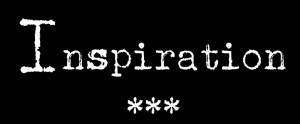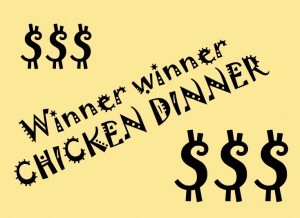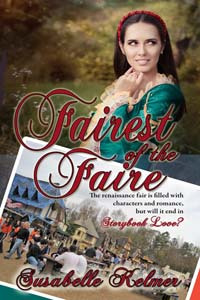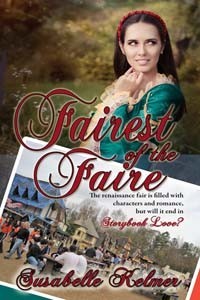Susabelle Kelmer's Blog, page 6
August 22, 2015
When The Busy Catches Up
Like most writers, I’m not just a writer and an author. I’m a mom and a wife. I have a full time job in higher education (I am not a professor, although wouldn’t that be fun?) that this time of year becomes way busier than I think I can keep up with. I have multiple vegetable gardens, which are all now needing my attention for harvesting, and with that harvesting, a lot of preserving and putting up for winter. I like to read sometimes (books and magazines).
And somewhere in there I need to find time to write.
Which right now seems to be a real struggle. I get home from work later than I’d like, fix dinner, then finish up some work that I brought home, or some side work that have deadlines, then do some laundry, maybe make a grocery store run, and suddenly, it’s 11 p.m. and I need to get in bed! I get up at 4:30 or so and start all over again. This week has been especially bad.
And all of this leads to my saying: I got nuttin’ for y’all this week. I checked my list of blog ideas, hoping I could come up with something to write for this week, but the list is empty, as I’ve apparently used up all my ideas! I don’t remember using the last idea on the list, but I guess I did! So, this is a really lame blog post, and I apologize, but I promise to do better next week. And if you have any ideas for blog topics, I’d love to hear them! Yes, I’m just about that desperate!
Happy weekend, everyone!
Fairest of the Faire – available now!
Schoolteacher Connie Meyers is suddenly a young widow, her husband killed in a horrific car accident. Heartbroken to find out he had gambled away everything they had, she moves to her sister-in-law’s Midwest home to rebuild her life. A trip to the local Renaissance Faire with her nieces leads to a summer job as a costumed storyteller.
Avowed bad boy and fair performer Gage Youngblood is infatuated with Connie at first sight. Despite his deliberately commitment-free life, and Connie’s don’t-touch-me attitude, he soon has her in his arms, realizing quickly she is also in his heart.
When she is threatened by her late husband’s bookie, he steps into the role of protector, his fate forever sealed with hers.
Available NOW!
Buy at Wild Rose Press: (eBook and paperback)
Buy at Amazon (Kindle and paperback)
Buy at Barnes and Noble (Nook)
August 15, 2015
Georgia’s Husband’s Sister’s Financial Advisor’s Cousin-in-Law
Have you ever read, or started to read, a book that had a dozen characters in the first chapter alone? By the time you get to the second chapter, the relationships between the dozen(s) of characters becomes about as clear as a muddy lake. By the third chapter, you’ve given up and the book goes in the pile to go to the second-hand store. There’s just no way to keep up with that character tree, and still have enough energy left to understand the story.
I think it’s important to put a limit on exactly how many characters will be involved, be extremely cautious with their names, and only keep in the characters that truly drive the story. While all of the ancillary characters my bring “character” and color to a story, if you’ve confused the reader with the sheer volume of them, your reader is going to give up and move on to something that isn’t so much work. We read fiction for fun and entertainment. Reading is an escape. Why make the escape complicated?
I would venture to add that keeping character names distinct is also important. If there is a Susan, Sandra, Sarah, and Sally in the same story, I’m going to forget who is who. Distinct names for characters is almost as important as keeping the total number of characters limited. The more the reader has to go back and figure out who all these people are, the quicker you are going to lose them.
The last point I’d like to make is to choose names for your characters that are easily pronounceable. If the reader has to stop each time the name is shown, in order to pronounce it in their heads, again, you are going to lose their interest. Making up a fabulous name that only you, the author, knows how to pronounce is definitely creative, but not conducive to keeping a reader. Use traditional or at least easily pronounceable phonetic standards for your names, and reconsider the name entirely if you find yourself typing it wrong when you are writing the story. Clarity and speed of being able to read the text are more important than a fancy and “unique” character name.
There’s nothing wrong with a good old Virginia, Katherine, Shannon, or Amelia as a character name. The same goes for Stephen, Kevin, David, Austin, or Thomas. Think simple. Put the complexity in the story, where it will be more easily appreciated.
What character names have you used in your writing? Do they have special meaning? Tell me about it in the comments!
Fairest of the Faire – available now!
Schoolteacher Connie Meyers is suddenly a young widow, her husband killed in a horrific car accident. Heartbroken to find out he had gambled away everything they had, she moves to her sister-in-law’s Midwest home to rebuild her life. A trip to the local Renaissance Faire with her nieces leads to a summer job as a costumed storyteller.
Avowed bad boy and fair performer Gage Youngblood is infatuated with Connie at first sight. Despite his deliberately commitment-free life, and Connie’s don’t-touch-me attitude, he soon has her in his arms, realizing quickly she is also in his heart.
When she is threatened by her late husband’s bookie, he steps into the role of protector, his fate forever sealed with hers.
Available NOW!
Buy at Wild Rose Press: (eBook and paperback)
Buy at Amazon (Kindle and paperback)
Buy at Barnes and Noble (Nook)
August 8, 2015
Getting to Know Your Characters – A Nineteen-Question Interview
 Oh, our pesky characters! We think we know who they are. They talk to us, giving us ideas, telling us what they want to do, especially to the other person. But we don’t know them at all. And we usually don’t figure out that that is a problem until later when the plot falters, and we are stuck trying to keep going when we are mired in a world of grey mud.
Oh, our pesky characters! We think we know who they are. They talk to us, giving us ideas, telling us what they want to do, especially to the other person. But we don’t know them at all. And we usually don’t figure out that that is a problem until later when the plot falters, and we are stuck trying to keep going when we are mired in a world of grey mud.
Clear as day, right?
I just don’t know enough about my characters. They are pretty, but flat, pieces of cardboard. They have no depth, and there’s nothing behind them but a whole lot of empty space. Kind of like that picture of a door in the middle of a meadow – it’s the same in front of the door as it is behind the door. This lack of depth can completely destroy what might have started out as a good story.
So I turn to character interviews. I’ve looked at hundreds of them over the years. I even have a book that covers character development, including interview questions, physical descriptions, and suggestions for how to describe someone. No single one has given me all the of the information I needed or wanted, and I’d end up putting togheter several character interviews to get what I needed.
So why didn’t I just write my own, using the questions I like the best, all in one document? Well, I did, finally. I have a 19-question character interview I use on all main characters. This includes the hero and heroine, and if there is a villain, him or her too. It helps me figure out their motivations, how they feel about themselves, what their goals are, and what bugs them the most. I have a list of 10 optional questions I sometimes use as well. I thought I’d share these with you today, in case they could help you too. Here is a link to a PDF version of the questions.
Do you have questions you like to ask your characters? I’d love to hear them! Leave your comments below!
Fairest of the Faire – available now!
Schoolteacher Connie Meyers is suddenly a young widow, her husband killed in a horrific car accident. Heartbroken to find out he had gambled away everything they had, she moves to her sister-in-law’s Midwest home to rebuild her life. A trip to the local Renaissance Faire with her nieces leads to a summer job as a costumed storyteller.
Avowed bad boy and fair performer Gage Youngblood is infatuated with Connie at first sight. Despite his deliberately commitment-free life, and Connie’s don’t-touch-me attitude, he soon has her in his arms, realizing quickly she is also in his heart.
When she is threatened by her late husband’s bookie, he steps into the role of protector, his fate forever sealed with hers.
Available NOW!
Buy at Wild Rose Press: (eBook and paperback)
Buy at Amazon (Kindle and paperback)
Buy at Barnes and Noble (Nook)
August 1, 2015
Inspiring Others
 I’ve had a few people lately ask me how I do it. I know that what they are really asking is how they can do it too. They are asking for inspiration.
I’ve had a few people lately ask me how I do it. I know that what they are really asking is how they can do it too. They are asking for inspiration.
Writing is hard, there’s no doubt about that. It’s hard work, from coming up with ideas, putting the ideas into some sort of logical timeline, writing all those words, editing those words, and then submitting to publishers. If you get a contract, then there is more editing, approvals of galleys, followed by a thoroughly soul-sucking amount of self-promotion and marketing to get your book bought and read.
Some people are obviously better at it than others. I don’t feel particularly good at it, but I am published, which means I’m at least somewhat good at it. But it is definitely hard work. I didn’t get to this point without having done all the previous steps – the formulating of the idea, getting the plot set up, writing it all down, and editing it. It took four years to get here. I know authors that publish two or three books a year. I am always surprised by this, because my process takes so much longer.
But what I can say is that it will never happen unless you sit down and start writing. There are no short-cuts. There are no magic pills you can take, or voodoo rituals you can do, to make any of it happen. You just have to sit down and write. I have a quote on my bulletin board at home, from the late great Erma Bombeck. “Want to write? Then write already!” And she’s right. It really is that simple. Sit down, and write. It doesn’t have to be good that first time. It doesn’t have to sparkle and shine. I definitely doesn’t have to be perfect. It just needs to be written. If you aren’t writing, you can’t call yourself a writer. That’s just the bottom line.
So, you want to be a writer? Then write already!
Fairest of the Faire – available now!
Schoolteacher Connie Meyers is suddenly a young widow, her husband killed in a horrific car accident. Heartbroken to find out he had gambled away everything they had, she moves to her sister-in-law’s Midwest home to rebuild her life. A trip to the local Renaissance Faire with her nieces leads to a summer job as a costumed storyteller.
Avowed bad boy and fair performer Gage Youngblood is infatuated with Connie at first sight. Despite his deliberately commitment-free life, and Connie’s don’t-touch-me attitude, he soon has her in his arms, realizing quickly she is also in his heart.
When she is threatened by her late husband’s bookie, he steps into the role of protector, his fate forever sealed with hers.
Available NOW!
Buy at Wild Rose Press: (eBook and paperback)
Buy at Amazon (Kindle and paperback)
Buy at Barnes and Noble (Nook)
July 25, 2015
That Delicate Balance
 When you work full time, and have a family, you learn how to balance the needs of your kids and husband with your need to earn a living. Sometimes you’re really good at it, and sometimes not so good at it. If you have hobbies, like gardening or quilting or book clubs, you have to find time for that, as well. And if you have what you hope will be a second career, say, as a writer, then you have to figure out how to work that in, as well.
When you work full time, and have a family, you learn how to balance the needs of your kids and husband with your need to earn a living. Sometimes you’re really good at it, and sometimes not so good at it. If you have hobbies, like gardening or quilting or book clubs, you have to find time for that, as well. And if you have what you hope will be a second career, say, as a writer, then you have to figure out how to work that in, as well.
In this day and age, it is almost impossible to rely on only one income to support a family, so if you are a working mother, and trying to be a writer, it gets even more difficult. In my case, I am the main breadwinner for the family, and I do it with a job that is somewhat high-stress, and very very busy. While I don’t work more than 50 hours a week most of the time, I do work hard, and come home tired to a house that still needs my care, and a family that needs to be fed. I have a garden to tend to in the summer, and I have social activities I like to participate in. How do I find time to write?
Somehow, I do. But I carve that time out for myself, and make it a priority. I have to, to feel balanced in my life. Over the years, I’ve trained myself to take my commute time as a transition between work and home. I don’t think about work at night or on the weekends. They don’t pay me enough for that. So I don’t think about work until I leave for work in the morning. I have about a 35 minute commute. On the way to work, I’m thinking about to-do lists and getting geared up for the day. On my way home, I am turning off the work thought and turning on the home thought. What do I have to do tonight? Is it a writing night (Wednesday)? Is it a chat night with my fellow authors (Tuesday)? Is it a night I need to work in the garden (Monday or Thursday)? Are there any events that might interfere with what is already on the established calendar, like a school concert for my daughter? There is also the preparations needed for dinner, the laundry that has to be done, the watering of the lawn, grocery shopping, bill paying…
At at some point, I need to get some sleep. 
It really does matter how we choose our priorities in life. Self-care is just as important as all the “chores” of living. My self-care includes bi-weekly manicures, and a monthly visit to my massage therapist. I also usually schedule a day in the mountains one day a month as well, which is the best form of therapy I can get. Building that balance between the must-haves, the self-care, and the “other” takes maturity, thoughtfulness, and a good dose of organization. But finding it can make all the difference between overall success and not-so-much success. And I prefer the success side, don’t you?
For me, writing happens every Saturday and Sunday morning, when I get up early (I get up early every day anyway so I can get things done) and go to the coffee shop for a two-hour writing stint. I catch up on getting blog posts written for the future, work on my novel in progress, do some editing, whatever is on my to-do list. That structured non-negotiable time has helped me to be productive. Wednesday nights I also tell myself I will be writing, for at least an hour. The rest of the time, I fit writing in when I can. There is gardening, housecleaning, kid-home-work-helping, self care, and being there for the hubby that need to happen. In a more perfect world, my “job” would be my writing, but I don’t live in that world, and I know many of my fellow writers do not either. So I do what I can, and try not to beat myself up too much about what doesn’t get done. Everything will work out as it should, as long as I put my best efforts into it. And I feel like I do that.
How do you balance work/life? What self-care is important to you, and what are your non-negotiables? Answer in the comments!
Fairest of the Faire – available now!
Schoolteacher Connie Meyers is suddenly a young widow, her husband killed in a horrific car accident. Heartbroken to find out he had gambled away everything they had, she moves to her sister-in-law’s Midwest home to rebuild her life. A trip to the local Renaissance Faire with her nieces leads to a summer job as a costumed storyteller.
Avowed bad boy and fair performer Gage Youngblood is infatuated with Connie at first sight. Despite his deliberately commitment-free life, and Connie’s don’t-touch-me attitude, he soon has her in his arms, realizing quickly she is also in his heart.
When she is threatened by her late husband’s bookie, he steps into the role of protector, his fate forever sealed with hers.
Available NOW!
Buy at Wild Rose Press: (eBook and paperback)
Buy at Amazon (Kindle and paperback)
Buy at Barnes and Noble (Nook)
July 18, 2015
We Might Be Old
I’ve been writing since I was a young teen. It’s hard to believe I’m about to hit my mid-50’s, and have just published my first book through a traditional publisher, The Wild Rose Press. I have a ton of fellow authors that I follow or interact with through my publisher. And one thing seems to stick out – we are all old.
Now, don’t get all offended. When I was in my 20’s, I could never imagine myself in my 50’s. I’m sure that’s true for a lot of us. We never think we’re going to get old in the first place. Anyone older than us is “old.” Right now, I don’t like to think of myself as old, because there are people older than me. Heck, one of the authors I interact with frequently is 84 years old. She just published her first book!
Goes to show you it’s never too late, right?
 Almost fifteen years ago, I discovered National Novel Writing Month, a rather nifty way to approach writing a novel. For the month of November, 30 days, you are supposed to begin and complete writing a 50,000 word novel. Sounds daunting, doesn’t it? It is, but it’s also an inspired way to write. The deadline is set for you, there is plenty of support through forums, pep-talk emails, and group write-ins at local coffee shops. That first year, I started late (9th of November) and still wrote a 96,000-word completed novel by November 30th. I didn’t know I had it in me! Since then, I’ve written every year for NaNoWriMo, and “won” every time.
Almost fifteen years ago, I discovered National Novel Writing Month, a rather nifty way to approach writing a novel. For the month of November, 30 days, you are supposed to begin and complete writing a 50,000 word novel. Sounds daunting, doesn’t it? It is, but it’s also an inspired way to write. The deadline is set for you, there is plenty of support through forums, pep-talk emails, and group write-ins at local coffee shops. That first year, I started late (9th of November) and still wrote a 96,000-word completed novel by November 30th. I didn’t know I had it in me! Since then, I’ve written every year for NaNoWriMo, and “won” every time.
The last two years, I’ve volunteered as a “Municipal Liaison” for the Boulder County, Colorado, region. This means I send out pep talks to aspiring “Wrimos” as we call ourselves, and plan local writing events. We have a kick off party and a wrap-up party, and a half-way-there party. One thing I’ve noticed about the Wrimos – they are predominately young. High school, college age, up until they get married and have kids, they are doing this Wrimo thing. There are few over-50’s at our events, and just a smattering of over-40’s. Maybe a few in their 30’s. Of course, I am proud of the young ‘uns for taking on the challenge. Their enthusiasm makes up for a lack of life experience. But I am surprised there are not that many writers at my age level in NaNoWriMo. Yes, we all have different responsibilities, including maybe families to raise, full time jobs to maintain, and other social activities that have nothing to do with writing. That balance in having enough time to write and still live the kind of life we need to live can be difficult, even impossible.
I feel like I wasted so much of my life before I really took writing seriously. And I wonder if it is the same for other writers of my age bracket and older. Were we waiting for our kids to be grown and gone (I still have one at home who is just now in middle school)? Were we waiting until financial security had set in, so we could afford to take the time to write? What kept us from writing when we were young? I was writing, of course, but not really doing anything with that writing. For whatever reason, I didn’t start taking the idea of working hard toward getting published until I was 50. I do regret that I didn’t start sooner.
But then, being a mature writer means I have some experience to write with. Yes, I’m writing about much younger women than myself. But I also know that the most voracious readers of romance novels are over 40. I still read romance novels. Romance novels sell, and sell well. I shouldn’t be surprised that the writers are “old” like me.
In fact, I’d have to say “we rock!”
Fairest of the Faire – available now!
Schoolteacher Connie Meyers is suddenly a young widow, her husband killed in a horrific car accident. Heartbroken to find out he had gambled away everything they had, she moves to her sister-in-law’s Midwest home to rebuild her life. A trip to the local Renaissance Faire with her nieces leads to a summer job as a costumed storyteller.
Avowed bad boy and fair performer Gage Youngblood is infatuated with Connie at first sight. Despite his deliberately commitment-free life, and Connie’s don’t-touch-me attitude, he soon has her in his arms, realizing quickly she is also in his heart.
When she is threatened by her late husband’s bookie, he steps into the role of protector, his fate forever sealed with hers.
Available NOW!
Buy at Wild Rose Press: (eBook and paperback)
Buy at Amazon (Kindle and paperback)
Buy at Barnes and Noble (Nook)
July 11, 2015
Music For Writing
I am one of those people that is rarely without music. I was raised not in a musical household so much, but my mother was a great lover of music. By the time I was a pre-teen, I was accompanying my mother to hear the St. Louis Symphony play at least once a month. She had purchased season tickets, and we’d make the drive from the suburbs to downtown, pay to park, find our seats with the help of nattily-dressed ushers with tiny flashlights, and settle in for the performance.
I enjoyed these trips with my mother, and the love of music just happened alongside it. I quickly found my favorites – Beethoven, Brahms, Tchaikovsky, Dvorak. I also quickly found the ones that set my teeth on edge – Stravinsky and Shostakovitch. I loved the formalness of the presentation – the women in long black gowns and the men in tuxedos. I would zero in on a particular performer – the timpani or the oboes – and obsess about their every move. At about this age, I started to play flute in grade school, so my love of music was reinforced with daily practice.
The love of music has never left me. I listen to a wide variety of things, from country, bluegrass, dulcimer, folk, 70’s rock, current rock, some 70’s disco and pop, and of course, classical music. Generally, this is my go-to when I’m trying to be creative, or calm my nerves. For writing, there is nothing like the drama in classical music. If I’m writing a dark scene, I might go for the Rhapsody Pathetique for Violin and Orchestra by Richard Nanes, or Barber’s Adagio for Strings Opus 11a. Isle of the Dead by Rachmaninoff is also great for dark writing. If I need happy, outdoors music, I might listen to Beethoven’s Pastoral (Symphony Number 6), or Symphony No. 63 “Loon Lake” by Hovhaness. If I need angry or powerful, I look for Dvorak and Tchaikovsky, or as I like to call them, “the angry Russians.”
There is such variety out there, I can find whatever I need to fit my mood, and the mood of my writing. Classical music, the good stuff, has a way of soothing away my stress, helping to focus my mind on my story and the scene I am writing. I know for some it is boring, and too quiet. I would posit that they have just not listened to the right kind of classical music! And there is another bonus about classical music – no words (unless you are listening to chorale or opera, and those are not on my list of things I like to listen to). Classical pieces are also quite long, twenty minutes to an hour. Talk about keeping you at it! Without breaks between songs, or words, it is so much easier to concentrate.
If you haven’t listened to classical music lately, you might want to try it again. You might find that it does just what you need it to do for you. And if you want a piece with highs, lows, and all the drama that a good classical piece should have, I’m going to recommend Mussorgsky-Ravel’s “Pictures at an Exhibition.” Ravel, of course, wrote Bolero, great for writing a fight scene. Mussorgsky wrote pieces you will easily recognize, most notably “Night on Bald Mountain,” which you will hear played at Halloween to bring on a chill. But by far my favorite of his is “Pictures.” It covers all the bases, from sweet and slow to crashing and loud, from sleepy thoughts to angry words, and everything in between.
What do you listen to when you write, if you listen to anything at all? Share it below in the comments!
Fairest of the Faire – available now!
Schoolteacher Connie Meyers is suddenly a young widow, her husband killed in a horrific car accident. Heartbroken to find out he had gambled away everything they had, she moves to her sister-in-law’s Midwest home to rebuild her life. A trip to the local Renaissance Faire with her nieces leads to a summer job as a costumed storyteller.
Avowed bad boy and fair performer Gage Youngblood is infatuated with Connie at first sight. Despite his deliberately commitment-free life, and Connie’s don’t-touch-me attitude, he soon has her in his arms, realizing quickly she is also in his heart.
When she is threatened by her late husband’s bookie, he steps into the role of protector, his fate forever sealed with hers.
Excerpt:
“Who said anything about a relationship?” he said, standing up so he could tower over her again. “I’m just trying to have a little fun. You know, fun?”
If he’d been an animal, she was sure he’d have had hair raised on the back of his neck, he seemed so angry, and it struck her painfully. She hadn’t wanted to anger him or hurt him. She turned away from him and closed her eyes to tamp down the tears she knew would come if she let them. She crossed her arms over her chest, to hold in the pain. Being tired made her much too vulnerable.
“Yes,” she finally said. “I know about fun. Life isn’t always fun, though.”
“Princess.” His voice was soft, tender. “I won’t hurt you. It’s not in my plan.”
Despite herself, she felt the shivers of desire race down from her shoulders, down her arms and legs, and back up to that secret, soft place at her core. She bowed her head and gritted her teeth, hoping for the feeling to go away.
“And what is your plan, Gage?”
“It’s a simple plan. I want you to feel good. I want to feel good, too.”
Available NOW!
Buy at Wild Rose Press: (eBook and paperback)
Buy at Amazon (Kindle and paperback)
Buy at Barnes and Noble (Nook)
July 4, 2015
I Before E…
…except when you are running a feisty heist on a weird beige foreign neighbor.
The English language is weird. Just flat-out weird. I’ve heard from non-native speakers that it is one of the hardest languages to learn. It seems there are more exceptions than there are rules. The “i before e” thing is just one example of that. Yes, field, friend, fiend, niece all follow the rule. But beige, neighbor, weird, heist, feisty, do not. And there are others.
When the letter “c” is at the beginning of a word, it is supposed to be a hard “k” sound. Carouse, carousel, curb, club, cube. But what about circus and circle? The “s” should be a ssssss sound like a snake. But what about does, flows, cause, pause, floods, where it sounds more like a z?
How confusing!
In my day job, I work with students with disabilities at a university. I work with making their print documents accessible. One student taking classes this summer is taking a course that talks about working with English Language Learners, particularly those that are Latina/o. Every article I have to convert for her talks about how children trying to learn English are not just speaking English with an accent, they are substituting sounds they are already familiar with in their native language, because the rules make no sense. What is the proper pronunciation from one particular letter in English, isn’t proper for the same letter in another word. Unlike Spanish, French, and even German, there are really no “standard pronunciations” that an English language learner can count on. The only real way to learn the language is by rote.
No wonder teachers have such trouble teaching kids about phonics!
What are your examples of crazy English language rules or exceptions?
Fairest of the Faire – available now!
Schoolteacher Connie Meyers is suddenly a young widow, her husband killed in a horrific car accident. Heartbroken to find out he had gambled away everything they had, she moves to her sister-in-law’s Midwest home to rebuild her life. A trip to the local Renaissance Faire with her nieces leads to a summer job as a costumed storyteller.
Avowed bad boy and fair performer Gage Youngblood is infatuated with Connie at first sight. Despite his deliberately commitment-free life, and Connie’s don’t-touch-me attitude, he soon has her in his arms, realizing quickly she is also in his heart.
When she is threatened by her late husband’s bookie, he steps into the role of protector, his fate forever sealed with hers.
Excerpt:
“Who said anything about a relationship?” he said, standing up so he could tower over her again. “I’m just trying to have a little fun. You know, fun?”
If he’d been an animal, she was sure he’d have had hair raised on the back of his neck, he seemed so angry, and it struck her painfully. She hadn’t wanted to anger him or hurt him. She turned away from him and closed her eyes to tamp down the tears she knew would come if she let them. She crossed her arms over her chest, to hold in the pain. Being tired made her much too vulnerable.
“Yes,” she finally said. “I know about fun. Life isn’t always fun, though.”
“Princess.” His voice was soft, tender. “I won’t hurt you. It’s not in my plan.”
Despite herself, she felt the shivers of desire race down from her shoulders, down her arms and legs, and back up to that secret, soft place at her core. She bowed her head and gritted her teeth, hoping for the feeling to go away.
“And what is your plan, Gage?”
“It’s a simple plan. I want you to feel good. I want to feel good, too.”
Available NOW!
Buy at Wild Rose Press: (eBook and paperback)
Buy at Amazon (Kindle and paperback)
Buy at Barnes and Noble (Nook)
June 27, 2015
If I Won the Lottery
 Don’t we all have that dream of winning the lottery? Even if we don’t want to waste money buying tickets for what is statistically a lost cause, it is not unusual to have discussions with friends, coworkers, and family about what you’d do if you ever won the lottery. This is especially true when a local jackpot has reached unbelievably high numbers.
Don’t we all have that dream of winning the lottery? Even if we don’t want to waste money buying tickets for what is statistically a lost cause, it is not unusual to have discussions with friends, coworkers, and family about what you’d do if you ever won the lottery. This is especially true when a local jackpot has reached unbelievably high numbers.
We all have things on our “if I won the lottery” list. Travel. A new house. A couple of fancy cars. Custom clothing. Paying off our parents’ mortgages. For some, starting an animal sanctuary, or contributing to a church, are at the top of the list.
As I get older, it is easy to pare down to what I think is the most important in my life. When I was young, a dream of winning the lottery meant a new car, a house, the usual things. But these days, when I think about what I would do if I came into some money, I can only think of three things that belong at the top of my list. That doesn’t mean there aren’t other things on the list, but there are three at the top. That’s because there are three things that I love above all other things. Please note I’m not talking about people – because that is as whole other discussion!
Writing. This is a no-brainer, right? I’m a writer. A published author. The time I spend writing is important to me. Whether I’m writing a blog post, an email to my mother, or putting scenes in my latest novel, these times are when I feel happiest. Even if there is writer’s block, I’d still rather be writing than doing most anything else. Except for…
Gardening. Growing my own food and having a beautiful flower garden are two of my greatest joys. I like being able to go outside in the morning to water my potted plants in the shade, while gazing at the perennials happily blooming in my flower beds. Roses, lilies, Dianthus, hens and chicks, and many others I don’t know the names of. Even if I didn’t live in a state that is cold and mostly snowy 7 months of the year, I would still love having the beauty of my flowers around. Then there are the vegetables. Between my plot at the community garden and my two vegetable gardens at home, we eat well. Squash, tomatoes, kohlrabi, cabbage, green beans, eggplant, cucumbers, lettuce, and herbs all grace my garden space. I also grow pumpkins for carving in the fall. Nurturing seedlings to grown plants, then harvesting their plenty, gives me a great sense of satisfaction. Even when it is hot and I’m sweating buckets, I’d still rather be in my garden than doing most anything else. Except for…
Cooking. I’m a trained and talented foodie. Good food graces my table most nights, and good food is a subject I can talk about nearly unendingly. All those wonderful veggies I grow? They often turn into dinner. I also know the best places in town to purchase wonderful veggies, including the local farmer’s market and an independent organic retailer. My cooking repertoire is large, and I can do anything from 20 minute meals to crockpot wonders to complex all-day meals. I love to cook. I’ve had a lot of practice, and can look at a new recipe and know immediately what isn’t going to work and needs to be adjusted. I am not into fancy baking (too much work) but have no problem babysitting an all-afternoon recipe for mushroom steak.
So how would I spend my lottery winnings? Well, a nice house with a kitchen that comprised half of the square footage would be a start. Professional 6-burner, 2-oven gas range, oversized stainless-steel fridge and freezer, and an electric oven for baking cakes. A place for people to sit and join in on the cooking, and plenty of windows or skylights for natural light. Oh, the cooking I would do! And of course, that house would sit on a decent piece of land that would allow for a decent-sized kitchen garden. Herbs, veggies, a few fruit trees – the goal being to provide most of what would be needed for the household. And then there would be my office-slash-library. Because a good writer needs inspiring space, and room for all of her reference materials. There would be comfortable chairs surrounding a fireplace, floor-to-ceiling built-in book cases, and an extensive corner desk in front of a bank of windows looking out onto either my garden, or woods. Also, the door would lock. A writer needs her privacy, as well!
What would you spend your lottery winnings on? What feels important to you?
Fairest of the Faire – available now!
Schoolteacher Connie Meyers is suddenly a young widow, her husband killed in a horrific car accident. Heartbroken to find out he had gambled away everything they had, she moves to her sister-in-law’s Midwest home to rebuild her life. A trip to the local Renaissance Faire with her nieces leads to a summer job as a costumed storyteller.
Avowed bad boy and fair performer Gage Youngblood is infatuated with Connie at first sight. Despite his deliberately commitment-free life, and Connie’s don’t-touch-me attitude, he soon has her in his arms, realizing quickly she is also in his heart.
When she is threatened by her late husband’s bookie, he steps into the role of protector, his fate forever sealed with hers.
Excerpt:
“Who said anything about a relationship?” he said, standing up so he could tower over her again. “I’m just trying to have a little fun. You know, fun?”
If he’d been an animal, she was sure he’d have had hair raised on the back of his neck, he seemed so angry, and it struck her painfully. She hadn’t wanted to anger him or hurt him. She turned away from him and closed her eyes to tamp down the tears she knew would come if she let them. She crossed her arms over her chest, to hold in the pain. Being tired made her much too vulnerable.
“Yes,” she finally said. “I know about fun. Life isn’t always fun, though.”
“Princess.” His voice was soft, tender. “I won’t hurt you. It’s not in my plan.”
Despite herself, she felt the shivers of desire race down from her shoulders, down her arms and legs, and back up to that secret, soft place at her core. She bowed her head and gritted her teeth, hoping for the feeling to go away.
“And what is your plan, Gage?”
“It’s a simple plan. I want you to feel good. I want to feel good, too.”
Available NOW!
Buy at Wild Rose Press: (eBook and paperback)
Buy at Amazon (Kindle and paperback)
Buy at Barnes and Noble (Nook)
June 20, 2015
I Make No Apologies
 A few weeks ago, I listened to a podcast interview with author Marlow Kelly. She and the podcast host talked about why we apologize, or feel we need to, for being “just a romance writer.” Readers, too, often apologize for reading them. A shrug of the shoulders, an embarrassed smile, a redness in the face.
A few weeks ago, I listened to a podcast interview with author Marlow Kelly. She and the podcast host talked about why we apologize, or feel we need to, for being “just a romance writer.” Readers, too, often apologize for reading them. A shrug of the shoulders, an embarrassed smile, a redness in the face.
But the fact is, the romance genre sells somewhere between $1.3 and $1.5 billion a year. That’s billion with a “B.” Romance novels comprise about 17% of the fiction market, bigger than any other genre. It is about the same sales as all sci-fi and mystery sales combined.
Yeah. We’re here. We’re reading, and we’re writing. Why should we feel embarrassed about that? We make the publishing world go around. We earn publishers a lot of money. Arguments are made all the time about romance being “just for women” and “junk food.” This may be more a matter of the marginalizing of women than anything else, but the truth is, romance novels are consumed regularly and voraciously by women all over the world. And women buy and read more books than men.
Thus, the thriving market for them!
I used to apologize for my writing. I could be found saying, “oh, it’s just a contemporary romance” when people would ask me what I was getting ready to publish. It is not “just” anything. My novel took as much work to write as literary fiction. There was research to be done to create the right setting, create believable characters, and write a plot that (in my case) contained a bit of mystery and suspense along with a standard love story and a Happily Ever After ending. Writing is not easy. Writing a believable story is not easy. Writing characters that a reader will care about is not an easy thing. Editing is not an easy thing. Getting a publisher to look at a manuscript is hard. Getting published is even harder.
I didn’t publish “just” a romance novel. I published a romance novel. Let me repeat that in my big-girl voice: I WROTE AND PUBLISHED A ROMANCE NOVEL. My novel will be read by women in many walks of life, with many different life circumstances, and for a few hours, I will have given them a romantic escape with my characters. I didn’t JUST write a contemporary romance novel. I WROTE A NOVEL.
I am proud of that, and all of my sister-writers should be proud of themselves as well. No apologies, no blushing, no “just” anything. Read what you want proudly. And write what you want, proudly.
Fairest of the Faire – available now!
Schoolteacher Connie Meyers is suddenly a young widow, her husband killed in a horrific car accident. Heartbroken to find out he had gambled away everything they had, she moves to her sister-in-law’s Midwest home to rebuild her life. A trip to the local Renaissance Faire with her nieces leads to a summer job as a costumed storyteller.
Avowed bad boy and fair performer Gage Youngblood is infatuated with Connie at first sight. Despite his deliberately commitment-free life, and Connie’s don’t-touch-me attitude, he soon has her in his arms, realizing quickly she is also in his heart.
When she is threatened by her late husband’s bookie, he steps into the role of protector, his fate forever sealed with hers.
Excerpt:
“Who said anything about a relationship?” he said, standing up so he could tower over her again. “I’m just trying to have a little fun. You know, fun?”
If he’d been an animal, she was sure he’d have had hair raised on the back of his neck, he seemed so angry, and it struck her painfully. She hadn’t wanted to anger him or hurt him. She turned away from him and closed her eyes to tamp down the tears she knew would come if she let them. She crossed her arms over her chest, to hold in the pain. Being tired made her much too vulnerable.
“Yes,” she finally said. “I know about fun. Life isn’t always fun, though.”
“Princess.” His voice was soft, tender. “I won’t hurt you. It’s not in my plan.”
Despite herself, she felt the shivers of desire race down from her shoulders, down her arms and legs, and back up to that secret, soft place at her core. She bowed her head and gritted her teeth, hoping for the feeling to go away.
“And what is your plan, Gage?”
“It’s a simple plan. I want you to feel good. I want to feel good, too.”
Available NOW!
Buy at Wild Rose Press: (eBook and paperback)
Buy at Amazon (Kindle and paperback)
Buy at Barnes and Noble (Nook)





